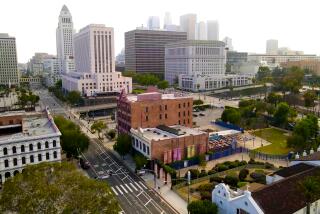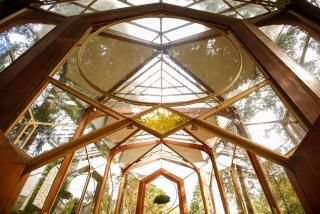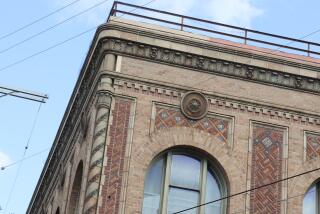Council Delays Construction at Mission Site
Discovery of the bones of at least 13 unidentified people--presumably U.S. soldiers dead for more than 100 years--have stopped for the time being plans by the Catholic Diocese of San Diego to build a parish hall on the site of the Mission San Diego de Alcala.
The Mission San Diego de Alcala was founded in 1769 as the first of modern California’s Catholic missions established by Father Junipero Serra.
Historians and archeologists Monday convinced the San Diego City Council to throw a temporary roadblock before the diocese’s plans by requiring the church to prepare a report by March on how construction of a parish multipurpose center may disturb the graves of at least 13 people, believed to be soldiers of the U.S. Army who occupied San Diego in the mid-1800s. If the diocese ignored the council’s request, the city could impose another 180-day waiting period.
But the two delays--totaling one year--would represent only a limited victory for historic preservationists. All the diocese would have to do is wait until September, 1986, before it would be free under current law to obtain a building permit and start construction of the proposed 8,200-square foot multipurpose center.
Donald R. Worley, attorney representing the diocese, did not attend Monday’s council meeting but said late Monday that the council’s action was “no surprise.” He said the diocese has yet to decide whether it will comply with the request and “go to the expense” of preparing the environmental impact report or just wait it out.
The controversy over the parish hall centers on how much of archeological importance is buried in the southwest corner of mission property, located near San Diego Jack Murphy Stadium in Mission Valley. The corner has been excavated extensively since 1966, and several buildings have stood there since the 1770s.
In January, the diocese was prepared to begin building its parish hall, which was designed to look like the mission’s original granary.
But led by Joy Higginbotham, formerly a docent, a group of historic preservationists argued that plans to sink 20 or so concrete caissons six feet into the site would disturb what they said could be San Diego’s first Christian graveyard.
An expert hired by the group told the city there was a possibility that even an 18th-Century Indian cemetery was in the vicinity. Worley, however, said that archeologists at the University of San Diego have determined that the new parish hall would not disturb any bodies because the old mission cemetery is not on the site.
The preservationists’ concerns prompted the city’s Historical Site Board to take a second look at the project. The advisory group had recommended approval of the parish hall in March, 1980, but evaluated the site again this summer and found the diocese had significantly changed the design of its multipurpose center, including doubling its size from the original 4,000 square feet, a city staff report says.
The advisory board voted in September to file a formal “objection” to the project after the diocese declined to present an environmental impact report. The council’s actions Monday upheld that action, enforcing a delay in the project at least until March, 1986, to give the diocese more time to prepare the report.
After the council meeting Monday, Higginbotham conceded the victory by preservationists is only temporary.
“We have no power to stop this unless we can get them (the City Council) to change the law and stop the project,” she said.
“For them (the diocese), waiting six more months or one more year is not a significant thing,” she added.
More to Read
Sign up for Essential California
The most important California stories and recommendations in your inbox every morning.
You may occasionally receive promotional content from the Los Angeles Times.









